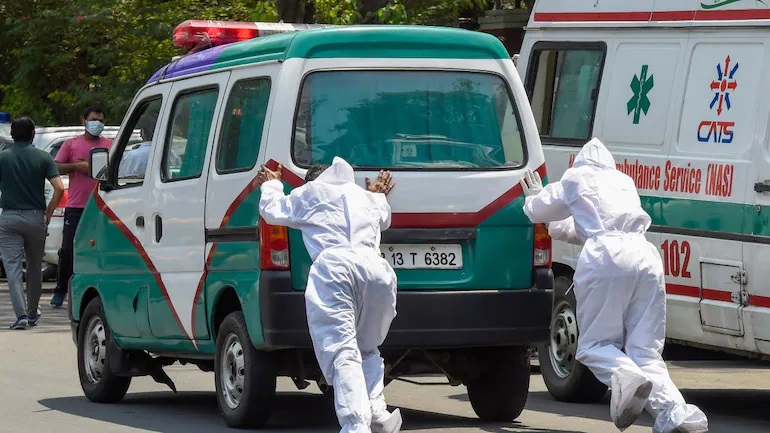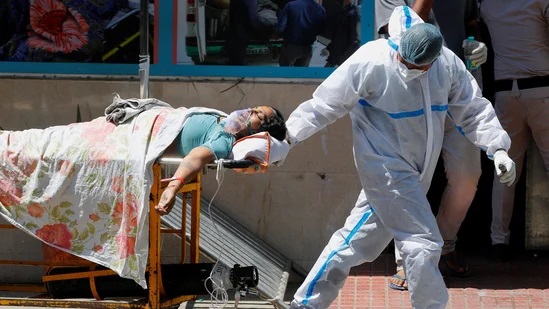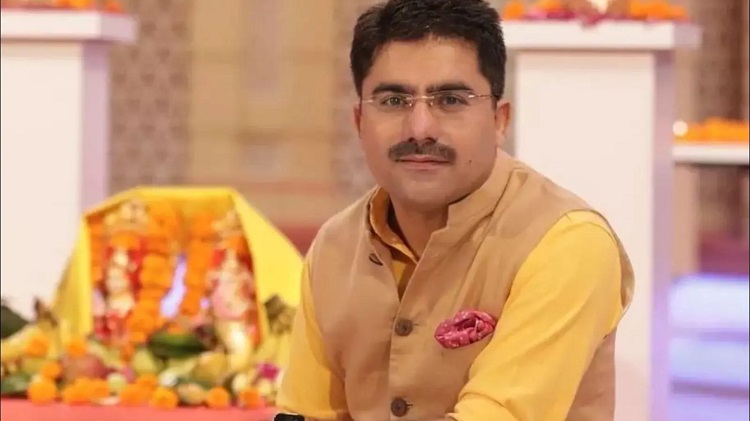
The world’s most lethal virus has wreaked havoc in India, and at the heart of the crisis is the nation’s total complacency in dealing with the crisis.
However, it would be wrong to say India is an unique nation so far complacency is concerned. There are other examples in Asia, and also in the world. But it is true that the lethal Covid-19 should have been checked and denied opportunities to transmit.
But this did not happen, and India – expectedly – is in the middle of an unprecedented human crisis, coinciding with the 35th anniversary of the Chernobyl disaster which shocked mankind in April 1986.
The Strait Times of Singapore reported that the number of journalists who died battling Covid in India is higher than reporters who died covering the Vietnam war.
Calamity leading to mass deaths are not uncommon in India. Thousands of Sikhs died in the 1984 riots that followed the assassination of PM Indira Gandhi in 1984, the same year thousands died in Bhopal after lethal methyl isocyanate gas leaked from poorly maintained tanks at the Union Carbide factory.
Yet, the nation did not learn its lessons, India remained complacent. The leaders did not tell the masses that there is no shame in being seen as extra careful. Everyone, the rulers and the people, let their guard down, hoping they had escaped 2020’s initial wave.
The message from the rulers (read politicians) was not a right message for a billion plus nation. The ruling BJP – whose frontline include PM Narendra Modi and Home Minister Amit Shah – addressed huge political rallies across India, so did Mamata Banerjee of Trinamool and leaders in TamilNadu, Kerala and Assam.
The leaders were all masked when they reached the venues of the rallies. But when they addressed their supporters without wearing a mask, a very bad signal in these dangerous times. Precise data on the correlation between political campaigns and the spike in Covid-19 is not available, but a report said the number of cases in West Bengal increased tenfold from early to the middle of April, 2021. The figure was several times the numbers in the crowded cities of Mumbai and Delhi.
Then there was the mother of all, the Kumbha Mela at Haridwar. The Ganges pilgrimage for a cleansing ritual was a huge super spreader. And there were the night markets in the Ramzan month, teeming with thousands.
The Opposition parties also played their destructive part. Samajwadi Party leader Akhilesh Yadav said he did not trust the Covid vaccine. He termed it “BJP’s vaccine”. Television channels hyped what many felt was a blatantly anti-vaccine rant.
Yadav’s rant was supported by senior Congress leader Rashid Alvi who said Yadav’s fear was justified. Also joining the anti-vaccine rant was Chhattisgarh health minister TS Singh Deo who said he will not accept Bharat Biotech’s Covaxin. Singh Deo forgot that his very own state government had asked the Centre for Covaxin.
Industrialist Rajiv Bajaj who urged Indians to be careful while getting vaccinated because he felt the risks far outweighed the benefits.
India, the world’s second most populous nation, is now faced with an unmitigated disaster. People are falling like ninepins.
Currently, India has had a total of 15.3 million reported coronavirus cases to date, with reported deaths to date of 180,000 people. Bulk of the collapsing healthcare system are from major Indian cities. No one knows the level of devastation in rural India, home to 70 per cent of India’s 1.3 billion people. It is common knowledge that the hinterland has far fewer hospital beds and medical personnel.

Yet, no one is in charge to treat those affected by the virus. The private hospitals are blaming the government, the government hospitals are blaming the government and the Centre is at loggerheads with the state governments over supplies of vaccines and oxygen.
Very few have asked hospitals – especially the private ones – how come they do not have their own oxygen plant despite spending over Rs 300-600 crores in setting up their gigantic brick and mortar structure. It costs Rs 10 crores to set up an oxygen plant that can take care of a huge hospital.
India’s rapid slide into this unprecedented crisis only happened because the government and various policymakers prematurely declared victory over the pandemic. The Board of Control for Cricket in India (BCCI), the world’s richest, allowed another rich event to take place, the Indian Premier League (IPL). The league is being played before empty stadiums, players living in a bio bubble. But then there is a serious argument over allocation of vital resources for the matches to happen. Worse, some state governments even opened movie halls, allowing over 200 to attend wedding parties.
Everyone claimed they had seen the endgame of the pandemic in India, relaxing the guard around the time when the variants were spreading. There is a strange, unfounded sense among Indians that exposure to pollution and microbes had pushed their immunity to superior levels.
Very few remembered that the double mutant now dominating headlines was first identified last October. But no one took notice. Sadly, it is this very mutant spreading like wildfire across Maharashtra.
Someone should have told the government that a nation with high population density should never relax its guard. But like all top political parties in India, the ruling BJP also lacks sensible advisors.
There is still some saving grace, the Indian mutant is reportedly less virulent than the British variety. But then, most of the known variants – the UK, Brazilian and South African – have also manifested in India.
It will be wrong to blame India alone for all the ills. The virus is wreaking havoc across the world. The United States is experiencing in some states the most dangerous outbreak, neighbouring Canada is in the midst of a third wave of infections.
The pandemic has brought India’s healthcare system to the verge of collapse. Millions of lives and livelihoods at risk.
Across India, the scenes are worse than Dante’s Inferno, reflecting the nation’s abysmal healthcare system. Ambulances with patients are seen waiting outside hospitals for hours because ventilator beds and oxygen had run out. Doctors at Shalby Hospital in Ahmedabad messed up the life of Rupal Thakkar. She lost her battle to Covid because of the hospital’s alleged mismanaged admission process and inadequate infrastructure.
In the Indian Capital, Rohit Sardana, a very influential journalist who had worked with the Zee network and Aaj Tak, died on Covid, triggering a response even from the PM.

If this was not all, there were reports how hospitals were filling beds with fake patients in the hope of earning extra cash. In expansive Noida in Uttar Pradesh bordering the Indian Capital, cops raided one hospital and freed over 200 beds. Similar incidents were also reported from the Indian Capital, Mumbai and Kolkata where patients got ICU beds after paying ten times the standard fee.
What was horrifying was most of the hospitals were largely manned by paramedical staff and junior doctors while the senior doctors were busy counselling patients through Skype or Zoom. In Delhi, home to 18 million people, only 40 intensive care unit (ICU) beds were available for Covid-19 patients.
The pandemic highlighted decades of underinvestment in India’s healthcare sector. Across India, hospitals continue to be short on anything and everything, trained doctors, paramedical staff, beds, blood, drugs, oxygen and even oxygen canisters.
However, some in the government argued that the proportion of those who died after a Covid-19 diagnosis was lower in India when compared with other nations. Very few said it was because 65 percent of Indians are under 35 years old. Worse, those in the 40 to 70 year category were more likely to have died in India because of comorbidities like hypertension, diabetes and respiratory disorders.
Lockdowns and curfews have started happening in many states, including Delhi and Maharashtra, but India’s drive to vaccinate its citizens is being impacted by severe supply shortages.
A second national lockdown will crush the economy. So it is out of the question. Indians will have to self-protect themselves. The government must use a scientific approach and issue orders for mandatory use of masks and ban all mass gatherings for sometime.
As per estimates, the current vaccination process will take till the end of 2022 to fully vaccinate 70 per cent of the Indian population.
And that is the figure a nation needs for achieving herd immunity. Only if India can increase its vaccine production capacity to over 12 million doses a day, it can vaccinate 70 per cent of its population in six months.
It is a tall call, a tall order for any nation.
